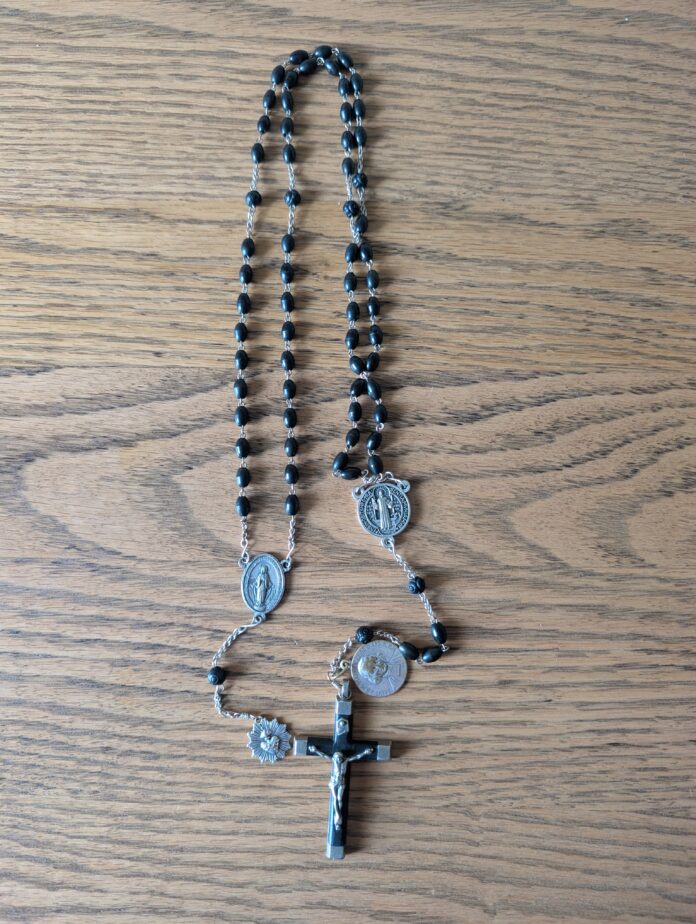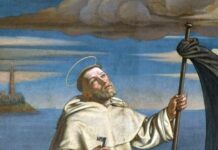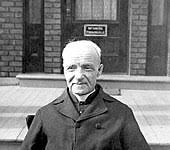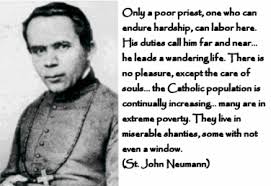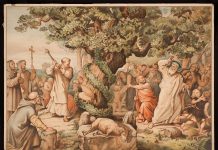On the Feast of Our Lady of Mount Carmel, we who wear her Scapular and have consecrated ourselves to her, mystically climb the heights of Mount Carmel. On this day, we who have been enrolled in the Confraternity of Our Lady of Mount Carmel are one with the members of the Order of Carmelites. Though not as numerous as the many branches of the Franciscan Order, there are many religious families that look to Our Lady of Mount Carmel as their Patroness and Queen. Countless however, are the Catholics who out of devotion to our Mother and our Queen wear the Brown Scapular, confident in her maternal protection now and at the hour of our death.
A particular Carmelite charism or gift enriches the entire Church, and the essence of this particular charism has a twofold dimension; the mystical and the prophetic. This unique gift does not belong to Carmel alone; and we can appropriate it as we endeavour to deepen our knowledge and love of the Christian Mystery. Mystical is a derivative of mystery; and a mystery, any mystery possesses two elements – what is known and what is not known. The life of Our Lady was mystical in this sense. To her was revealed much of the Mystery of Salvation but not everything; and so she walked in faith as we do. The lives of cloistered Carmelite nuns are also mystical in this sense. They inhabit the very heart of the Church for their hidden life of prayer and sacrifice is a life of love. Like Our Lady, they too are intimately bound to the Mystery of Salvation but the fruit of their prayer and sacrifice is often not known to them. The scope and effect of their prayer are universal and only in Heaven will they know of how great a benefit their hidden lives were to this world’s salvation. We can and do learn from the example of Our Lady and the living example of the nuns to recognize the mystical dimension of our lives. There are times when the events of our lives are mysterious to us; when it is difficult for us to perceive the meaning of these events. At such moments we recognise that truly we walk by faith and not by sight. What matters most is that we continue to walk along the path of devout discipleship, confident that under the patronage and protection of Our Lady we will reach the summit of the mountain, Christ Our Lord.
To live in this manner is also to live prophetically. Though the nuns live a life hidden with Christ in God, their lives are prophetic. This is the second dimension of the Carmelite charism which is proclaimed by the witness of their hidden life. The cloistered, hidden life of the nuns provides a silent yet eloquent witness of the one thing necessary. Christ is our life, and when all is said and done, He alone matters. The truth of this statement was prophesied by our Lady in the Magnificat which the Church prays every evening at Vespers. Through the Magnificat Our Lady, Queen of Prophets continues to proclaim the greatness of the Lord far and wide, throughout the ages. Mary, Queen and Beauty of Carmel teaches us as she teaches her daughters in Carmel to proclaim the greatness of the Lord’s mercy. My soul magnifies the Lord.
Through the ages, the mystical and prophetic dimension of the Carmelite charism has manifested itself in the Saints of Carmel whose witness has inspired countless souls; Saints like St. Therese of the Child Jesus and St. Teresa Benedicta of the Cross. Many hidden souls, simple and ordinary Catholics participate in this mystical and prophetic dimension of the Christian life aided by the graces and strength received through the use of sacramentals that are particular to Carmel. These include especially the Brown Scapular and the Rosary. The Carmelite Scapular is perhaps one of the most popular of the Church’s treasury of sacramentals. It speaks of the tenderness of Our Lady, of her love for her children, and we wear it with love and devotion as a sign of our consecration to her and of our confidence in her loving protection now and at the hour of our death.
The other sacramental is the Rosary, specifically, the Carmelite Rosary which consists not of five but of six decades. St. Teresa of Jesus, whom the Carmelites honour as Our Holy Mother St. Teresa prayed the Rosary daily. It is believed that while she was traveling through Spain she enjoyed the hospitality of at least one Brigittine Monastery, and from the Brigittines, learned to say the six-decade Rosary which was later adopted as the rosary of the Discalced Carmelite habit. The Brigittine Rosary includes an extra decade. The resultant seven Pater beads honour the Seven Sorrows of Our Lady, and the sixty-three Ave Maria beads commemorate the sixty-three years it is believed the Blessed Mother lived on earth before her Assumption. In praying the Brigittine Rosary, there are a total of eighteen decades: In the six Joyful Mysteries, the first is the Immaculate Conception; the sixth of the Sorrowful Mysteries commemorates when the Body of the Lord was placed in the Arms of His Sorrowful Mother; and the sixth of the Glorious Mysteries is recited in honor of the Patronage of Mary, Mediatrix of All Grace and, for the Carmelite, Mary, Queen and Beauty of Carmel. The other mysteries are the same as in the Dominican Rosary.
The Brigittine Rosary further enriches the Rosary of Our Lady and although slightly longer, it invites us to contemplate Our Lady in the Mystery of Salvation as this Mystery continues to unfold in our own souls and in the world around us. The sixth sorrowful mystery, Jesus taken down from the Cross and placed in the loving arms of His Mother is a poignant event to contemplate and offers us the opportunity to pray for those who mourn the death of a loved one and so enter into the compassionate love of Our Lady.
The patronage of Our Lady that the Feast of Our Lady of Mount Carmel celebrates is a source of great consolation and the Brown Scapular is a visible and external expression of both Our Lady’s protection and of our devotion to so beautiful and so good a Mother. The entry in the Roman Martyrology for today’s Feast states: Our Lady of Mount Carmel, where once the Prophet Elijah had brought back the people of Israel to the worship of the living God. Subsequently, some hermits in search of solitude retired to this same place, instituting ad Order of contemplative life and placing this same Order under the patronage of the Mother of God. At Fatima, during the last apparition on October 13, 1917, Our Lady appeared as Our Lady of Mount Carmel and like the Prophet Elijah she exhorted her children to a life of prayer, sacrifice and fidelity to the commandments of God. In the century since those apparitions and beyond, religious indifference and indifferentism are sadly some of the defining characteristics of our times.
Let us therefore, renew our own personal commitment to the integrity of the Catholic Faith and the patronage and protection of so good a Mother. In 1479, a Belgian Carmelite, Arnold Bostius, wrote a significant book on the patronage of Mary towards Carmel, with the reciprocal obligations of her clients. One of the beloved legends he recounted was that Our Lady visited the hermits on Carmel. I believe that the holy flock of Carmel, instructed by the example and doctrine of so perfect a teacher, must have often cried out under the influence of her great love: ‘How have we deserved to be visited by the Mother of our Lord? O most blessed Mother, whom up to now we have been waiting for, who instituted our Order, organized it and now rules it perfectly—you are the fulfillment of the Law, the completion of the figures, the declaration of the prophets, the showing of the truth. We who are privileged to live here fill our hearts at your fountains. We openly profess that we are guided by your light, transformed into you and our life into your life. Nothing is better for us than your assistance, nothing more joyful than your consolation. Remain with us, O Lady Mary; we seek refuge in your bosom. A mother must stay with her sons, a teacher with her pupils, a superior with her subjects, and a queen remain with her servants. Our holy father Elijah dedicated himself and his sons to you. By your great merits you have given beauty and nobility to the whole family of Carmel from its very beginning’. Let these holy sentiments be our very own; that we too may grow in fervour, gratitude and great hope in the knowledge that we have so good a Mother and Queen.

